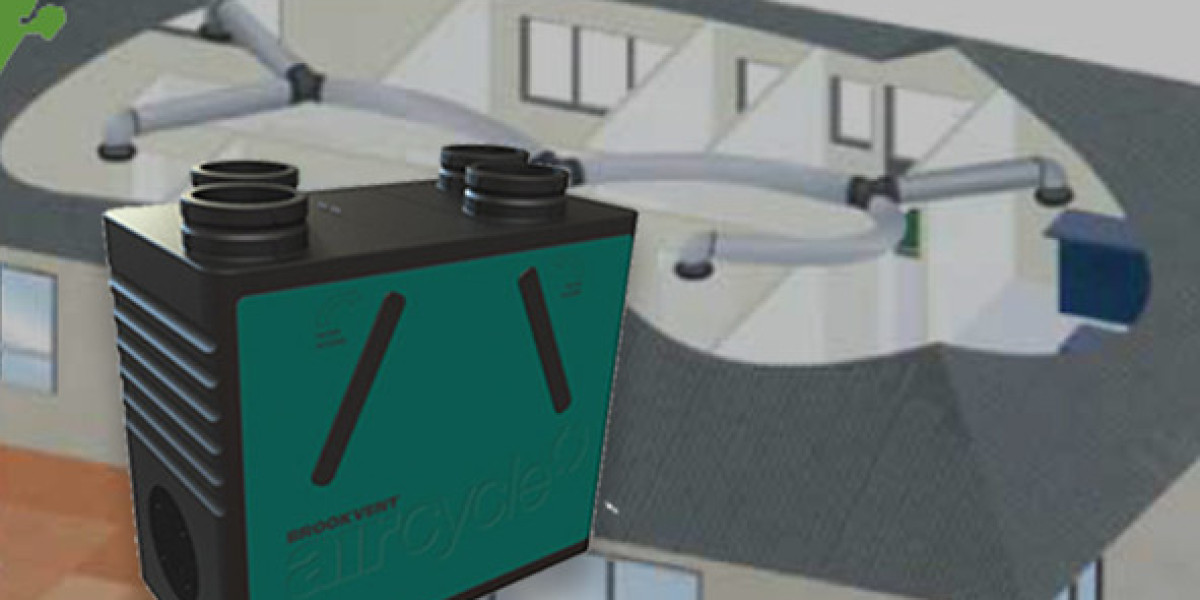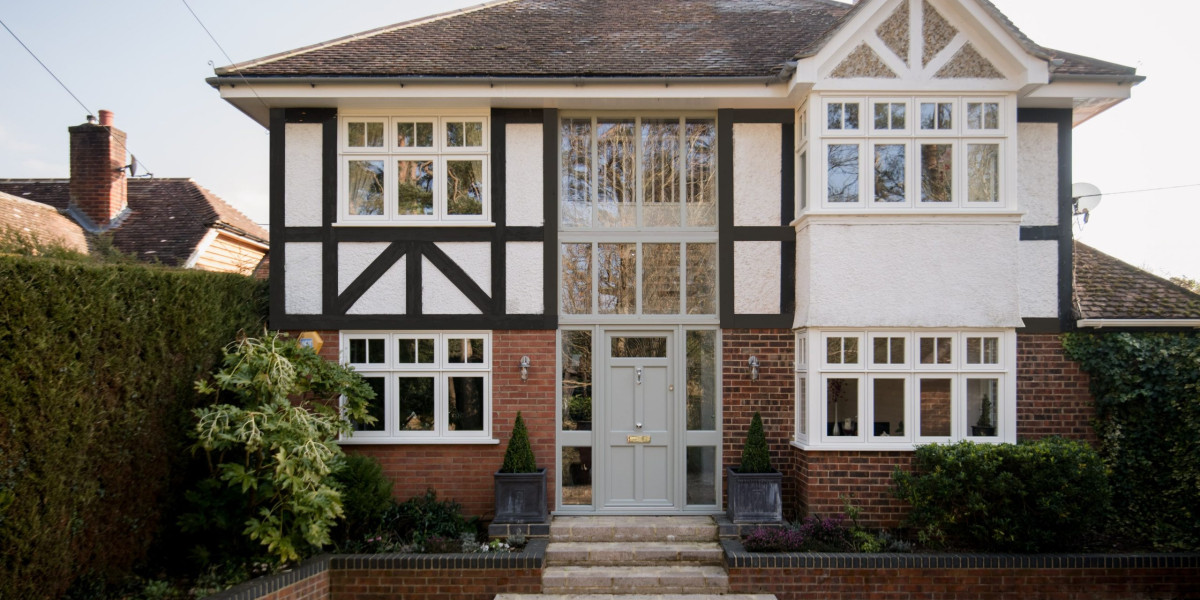Imagine stepping into your home and taking a deep breath of fresh, clean air. Sounds refreshing. Yet for many of us, that’s not the reality. Our homes can harbor harmful pollutants and stale air if we neglect one crucial element: ventilation. Often overlooked, proper air ventilation is essential to creating a healthy living environment.
Whether you're cooking dinner or enjoying family time in the living room, the quality of the air you breathe significantly impacts your well-being. It is vital in regulating temperature, reducing humidity, and promoting comfort. As we dive deeper into this topic, we'll explore why good air circulation matters so much for your health and how you can enhance it within your four walls. Let's embark on this journey toward cleaner indoor air together!
The Importance Of Air-Ventilation For A Healthy Home
Air-ventilation is a key factor in creating a healthy living space. It ensures fresh air circulates throughout your home, replacing stale air and reducing humidity. Good ventilation helps to control indoor temperature, making your home more comfortable year-round. Without proper airflow, rooms can become stuffy and uninviting.
Moreover, adequate ventilation is crucial in minimizing the risk of mold growth. Excess moisture trapped indoors can lead to serious health issues over time. Another important aspect is the removal of airborne toxins. Everyday activities like cooking or using household cleaners release pollutants into the air. A well-ventilated home helps flush these harmful substances out before they accumulate. In essence, maintaining proper air circulation enhances comfort and supports overall well-being for you and your family.
Health Benefits Of Proper Ventilation System
Proper ventilation system plays a vital role in maintaining overall health. It helps circulate clean, fresh air throughout your home, reducing the concentration of harmful pollutants.
Fewer Respiratory Issues
With adequate airflow, you can experience fewer respiratory issues. Regular air exchange effectively reduces dust mites, mould spores, and allergens. This leads to easier breathing and less irritation for those with asthma or allergies.
Removal of harmful pollutants
Proper ventilation helps remove harmful pollutants from indoor air, such as carbon monoxide, formaldehyde, and volatile organic compounds (VOCs). When inhaled in high concentrations, these toxins can cause headaches, dizziness, and other health issues.
Prevention of mould and mildew growth
Mould and mildew thrive in damp and poorly ventilated spaces. By increasing airflow, you can prevent the growth of these harmful fungi, which can cause respiratory issues and worsen allergies.
Improved cognitive function
Research has shown that proper ventilation can improve cognitive function and productivity. An adequate supply of fresh air helps to clear the mind and improve focus.
Reduced risk of illness
Proper ventilation reduces the risk of illness by removing airborne bacteria and viruses. This is especially important during cold and flu season when these germs are easily spread through the air.
Better sleep quality
A well-ventilated room with clean air promotes better sleep quality. Fresh air helps regulate temperature and humidity levels and removes stuffy or stagnant air that can disrupt sleep.
Improvement in overall comfort
Good ventilation also contributes to overall comfort by preventing odours from lingering in your home. It also helps regulate temperature, reducing the
Good ventilation also regulates humidity levels. Excess moisture can lead to dampness and promote the growth of mould. A well-ventilated space prevents these problems and keeps indoor environments dry. Moreover, proper air exchange supports mental clarity. Stale air can cause fatigue and reduce focus over time. Fresh oxygen invigorates your mind and enhances productivity at home or work.
Typical pollutants in the home and their effects on health
Indoor air can harbour various pollutants, often more concentrated than outdoor air. Common culprits include dust mites, mould spores, pet dander, and volatile organic compounds (VOCs). These substances can trigger allergic reactions and respiratory issues.
Dust mites thrive in bedding and upholstery. Their waste products are notorious allergens that may lead to sneezing or asthma attacks.
Mould grows in damp areas like bathrooms or basements. It releases spores into the air that can cause irritation and exacerbate existing health conditions.
Pet dander is another frequent issue for allergy sufferers. Even if you don’t have pets, visiting homes with animals might affect your well-being.
VOCs come from everyday items such as paints, cleaners, and furniture finishes. Prolonged exposure can contribute to headaches or dizziness while potentially harming long-term health.
Awareness of these pollutants helps you act toward a healthier living environment.
How Can You Improve Air Ventilation System For Home?
Improving Air ventilation system for home begins with simple steps. Start by opening windows regularly to allow fresh air circulation. Cross-ventilation is effective; airflow is created by opening windows on opposite sides of the house.
Consider using exhaust fans in kitchens and bathrooms. These help remove moisture and odours, contributing to a fresher environment.
Check your HVAC system's filters monthly. Clean or replace them to ensure optimal performance and better air quality.
Using indoor plants can naturally enhance ventilation. Plants like spider plants or peace lilies absorb toxins while releasing oxygen.
Seal any gaps around doors and windows to prevent drafts, and ensure that vents are unobstructed for maximum airflow throughout your space.
Tips for maintaining good air quality
Maintaining good air quality is essential for a healthy living environment. Start by regularly changing your HVAC filters to trap dust and allergens effectively.
- Incorporate indoor plants into your decor; they naturally purify the air and enhance aesthetics. Spider plants, peace lilies, and snake plants are great options.
- Regular cleaning also plays a vital role. Dust surfaces frequently and vacuum carpets using HEPA filters to minimise pollutants.
- Avoid smoking indoors as it introduces harmful chemicals that linger in the air long after smoking has ceased.
- Additionally, consider using an air purifier with activated carbon filters to reduce odours and contaminants significantly.
Monitor humidity levels in your home; aim for 30-50% relative humidity to prevent mould growth while ensuring optimal comfort.
Importance of Air-ventilation for a Healthy Home Environment
Air-ventilation plays a crucial role in maintaining a healthy home environment. It ensures that fresh air circulates while harmful pollutants are expelled. Without proper airflow, indoor air can become stale and contaminated. Stagnant air can increase humidity levels, fostering mould growth and dust mites, which can trigger allergies and asthma symptoms. Adequate ventilation also helps regulate temperature, creating a more comfortable living space.
Moreover, effective air exchange reduces the concentration of volatile organic compounds (VOCs) emitted by household products like paints and cleaners. These substances can adversely affect your health over time. A well-ventilated home not only protects physical health but also enhances mental well-being. Cleaner air improves focus and productivity, making your living space feel inviting and energising. Investing in good ventilation is essential to nurturing your home’s atmosphere and its inhabitants’ quality of life.
How Proper Ventilation Can Reduce Allergies and Improve Health?
Proper ventilation is vital in reducing allergens that can trigger health issues. Promoting fresh air circulation helps dilute and remove indoor pollutants like dust mites, pet dander, and mould spores. When your home is well-ventilated, humidity levels remain balanced. This prevents moisture buildup, a breeding ground for mould and mildew—common culprits behind respiratory problems.
Good airflow also ensures that any chemical fumes from cleaning products or paints dissipate quickly. Less exposure to these irritants means fewer allergy flare-ups and improved overall well-being. In environments where air is stagnant, allergens thrive. Adequate ventilation disrupts this cycle, allowing you to breathe easier while minimising discomfort associated with allergies.
Mechanical vs. Natural Ventilation: Which One Is Best for You?
Mechanical ventilation uses fans and ducts to circulate air, making it a controlled solution. This method can efficiently filter outdoor air and regulate indoor humidity levels. Mechanical systems offer cleaner options for those living in densely populated areas or near pollution sources. Natural ventilation relies on windows, doors, and vents to allow fresh air to flow naturally. It's often energy-efficient since it doesn't require electricity for operation. The charm of this approach lies in its simplicity and connection with the outdoors.
Choosing between the two depends on your specific needs. If you live in an area with high outdoor pollutants, mechanical ventilation may be better suited for you. Conversely, if you enjoy fresh breezes and live in a relatively clean environment, natural ventilation could enhance your comfort. Consider factors like climate conditions, home layout, and personal preferences when deciding which method best suits your lifestyle.
Energy-Efficient Air-ventilation Tips to Keep Your Air Fresh and Clean
Energy-efficient air ventilation can significantly improve indoor air quality without soaring energy bills. Seal gaps or leaks in windows and doors to prevent outside air from sneaking in.
Consider installing a heat recovery ventilator (HRV) or an energy recovery ventilator (ERV). These systems exchange stale indoor air with fresh outdoor air while conserving energy for heating or cooling.
Use ceiling fans strategically. They help circulate air, allowing you to feel cooler during warmer months and reducing the need for excessive AC use.
Regular maintenance of HVAC systems is crucial. Clean filters monthly and schedule professional check-ups to ensure your system runs optimally and efficiently.
Plant indoor greenery like spider plants or peace lilies. Not only do they add aesthetic appeal, but they also naturally filter pollutants, contributing to fresher space while being easy on your energy budget.
Conclusion
Understanding your home's specific needs will guide you in choosing between mechanical and natural ventilation. Each option has its own set of benefits, tailored to different environments. Regular maintenance and monitoring are key. Small changes, like opening windows or using exhaust fans, can make a big difference. Stay informed about pollutants lurking within your spaces and take proactive measures to mitigate their impact on health. Creating an environment where fresh air circulates freely opens doors to better living conditions. Your journey toward improved air quality begins with awareness and action, leading to healthier breathing spaces for everyone at home. Prioritising air ventilation aspect supports physical well-being and contributes positively to mental clarity and overall happiness.
FAQS
What is air-ventilation, and why is it essential for my home?
Air-ventilation refers to the process of exchanging indoor air with outdoor air. It helps control humidity levels, remove stale air, and reduce indoor pollutants. A well-ventilated home enhances comfort and contributes to a healthier living environment.
How can I tell if my home has poor air ventilation?
Signs of poor ventilation include stuffy rooms, condensation on windows, musty odours, or excessive dust buildup. If you frequently sneeze or experience respiratory issues indoors, these could be indicators that your home's airflow needs improvement.
Are there energy-efficient ways to improve ventilation?
Yes! You can use exhaust fans in kitchens and bathrooms, open windows strategically when weather permits, or consider installing a heat recovery ventilator (HRV). Regular maintenance of HVAC systems also ensures efficient airflow without wasting energy.
Related Business Listings |







